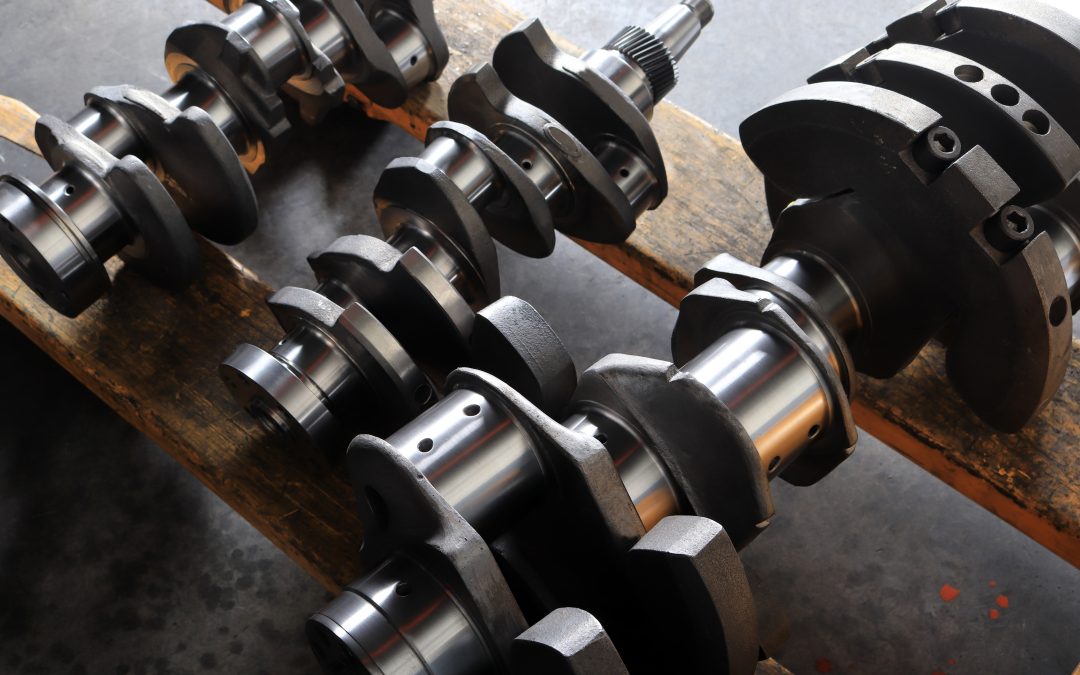Camshafts are key parts of an internal combustion engine. They control the opening and closing of the engine’s valves, which allows air and fuel to enter the engine and exhaust gases to leave.
Camshafts come in two main types: single pattern and dual pattern. Knowing the differences between these types can help you choose the right one to get the best performance from your engine.
Single Pattern Camshafts
A single pattern camshaft is a type of camshaft where the intake and exhaust valves have identical lift and duration profiles.
Lift: This refers to how far the valve opens. In a single pattern camshaft, both the intake and exhaust valves lift to the same height.
Duration: This refers to how long the valve stays open. In a single pattern camshaft, both the intake and exhaust valves remain open for the same amount of time.
Advantages:
Simplicity: Single pattern camshafts are easier to design and manufacture because the same specifications are used for both the intake and exhaust valves. This uniformity reduces the complexity involved in creating the camshaft, making the production process more straightforward.
Cost: Due to their simpler design and manufacturing process, single pattern camshafts are typically less expensive to produce. This cost efficiency can make them a more affordable option for engine builders and manufacturers.
Tuning: Since both the intake and exhaust valves have the same lift and duration, tuning a single pattern camshaft is generally easier. Mechanics and enthusiasts can adjust the camshaft settings without having to account for different valve timings, simplifying the tuning process.
Balanced Performance: For engines where the intake and exhaust systems are well-matched, single pattern camshafts can provide balanced performance. This can lead to smooth engine operation and satisfactory power output without the need for complex adjustments.
Reliability: The uniform design of single pattern camshafts can contribute to greater reliability. With fewer variations in valve timing, there is less potential for timing-related issues, which can enhance the overall durability of the engine.
Ease of Replacement: If an engine is designed with a single pattern camshaft, finding and installing a replacement camshaft can be more straightforward. This can be particularly beneficial for maintenance and repairs, reducing downtime and simplifying the process for mechanics.
Disadvantages:
Performance: Single pattern camshafts may not deliver the best performance for all engines, particularly those with significant differences in how air and exhaust gases flow through the intake and exhaust systems.
When the intake and exhaust needs are different, having the same lift and duration for both valves can lead to suboptimal performance. This can result in less efficient combustion and reduced power output.
Customization: Single pattern camshafts offer limited flexibility for fine-tuning engine performance across various operating conditions.
Since the camshaft uses the same specifications for both intake and exhaust valves, making precise adjustments to optimize performance for specific driving conditions or engine loads is harder.
This lack of customization can be a drawback for those seeking to achieve peak performance in different scenarios.
Engine Efficiency: Engines with unbalanced intake and exhaust systems might suffer from decreased efficiency when using single pattern camshafts. The inability to independently optimize valve timings can lead to inefficient air-fuel mixture combustion, resulting in lower fuel efficiency and increased emissions.
Best For:
Single pattern camshafts are ideal for engines where the intake and exhaust systems are well-balanced, meaning they have similar airflow characteristics and requirements.
In these engines, a uniform cam profile, where the lift and duration of the intake and exhaust valves are the same, can provide satisfactory performance without the need for complex tuning or adjustments.
Dual Pattern Camshafts
Definition:
A dual pattern camshaft is a type of camshaft designed with different lift and duration specifications for the intake and exhaust valves.
In simpler terms, a dual pattern camshaft is customized so that the intake and exhaust valves operate in a way that best suits their specific roles.
The intake valves might open wider or stay open longer for more air and fuel, while the exhaust valves might have a different profile for efficient gas expulsion. This tailored approach can optimize engine performance by addressing the unique requirements of both the intake and exhaust systems separately.
Advantages:
Performance Optimization: Dual pattern camshafts can be specifically designed to optimize performance for engines with unbalanced intake and exhaust flow characteristics. By having different lift and duration profiles for the intake and exhaust valves, these camshafts can enhance airflow dynamics, leading to better overall engine performance.
Flexibility: Dual pattern camshafts offer greater flexibility in tuning for specific engine setups. This is especially beneficial in high-performance or racing applications where precise adjustments are crucial. Tuners can tailor the camshaft to maximize power and efficiency based on the unique demands of the engine.
Efficiency: By addressing the distinct needs of the intake and exhaust cycles separately, dual pattern camshafts can improve both power and fuel efficiency. The ability to fine-tune valve timings ensures that the engine breathes more effectively, resulting in more complete combustion and better fuel utilization.
Customization: These camshafts allow for more detailed customization, enabling the engine to perform optimally across a wider range of conditions. Whether it’s for daily driving or competitive racing, dual pattern camshafts can be adjusted to meet specific performance goals.
Enhanced Engine Response: With tailored valve timings, dual pattern camshafts can provide quicker and more responsive engine behavior. This can lead to improved throttle response and acceleration, making the vehicle feel more dynamic and powerful.
Disadvantages:
Complexity: Dual pattern camshafts are more complex to design because they require different specifications for the intake and exhaust valves. This involves additional engineering and precision to ensure that both sets of valves operate optimally.
Tuning a dual pattern camshaft is also more challenging since it demands careful adjustment of multiple variables to achieve the desired performance outcomes.
Cost: The increased complexity in design and manufacturing makes dual pattern camshafts more expensive than single pattern camshafts.
The need for additional engineering work, precision machining, and testing contributes to the higher cost. This can make dual pattern camshafts less accessible for budget-conscious engine builders and enthusiasts.
Installation: Installing a dual pattern camshaft can be more involved than a single pattern one. Mechanics and tuners need to be well-versed in the specific requirements of dual pattern camshafts to ensure proper installation and adjustment, which can add to labor costs and installation time.
Maintenance: The sophisticated design of dual pattern camshafts can make maintenance more demanding. Any issues or wear and tear on the camshaft might require more specialized knowledge and tools to address, potentially leading to higher maintenance costs and complexity.
Best For:
Dual pattern camshafts are particularly well-suited for high-performance engines, which demand precise control over valve timing to achieve maximum power and efficiency. These camshafts are ideal for engines that operate at high RPMs and require optimal airflow to perform at their best.
High-Performance Engines: In racing and performance vehicles, dual pattern camshafts can significantly enhance engine capabilities. They allow for fine-tuning that maximizes horsepower and torque, providing the edge needed for competitive racing or spirited driving.
Engines with Significant Intake and Exhaust Flow Differences: Some engines have intake and exhaust systems that flow very differently from each other. Dual pattern camshafts can be customized to address these differences, improving the efficiency of each cycle. This results in better combustion and exhaust scavenging, leading to increased performance.
Choosing between a single and dual pattern camshaft depends on the specific requirements of the engine and the desired performance characteristics. For stock or mildly modified engines, a single pattern camshaft might be sufficient. However, for high-performance or racing engines, a dual pattern camshaft can provide significant benefits.

